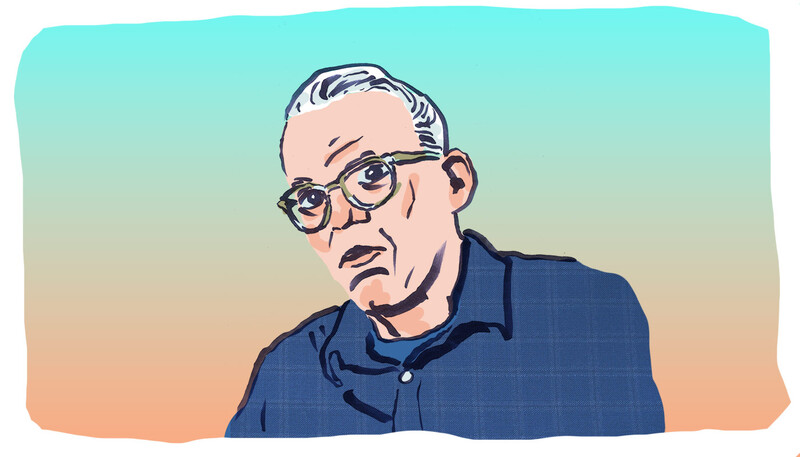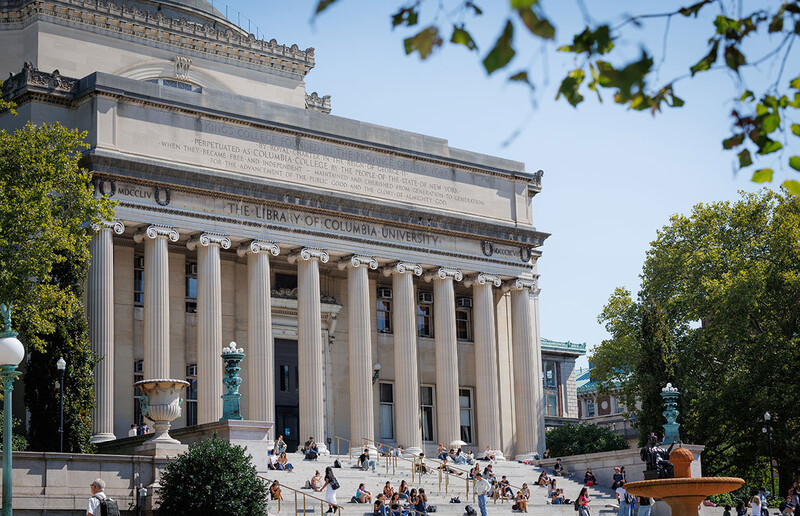By the end of Commencement Week, the Morningside campus, which had been covered with aluminum bleachers, white tents, and more than 30,000 people, wore the trampled, sodden look of a fairground the morning after. On South Lawn, workers rolled up rubber mats, revealing a carpet of yellow straw where green turf had been. The disassembled metal benches on Low Plaza lay rain-flecked, gleaming dully. On Friday afternoon, few people were about, and the campus, recuperating from its hangover, was peaceful.
Any wanderer straying into Havemeyer Hall, then, perhaps to relax for a moment in the wooden splendor of the famous lecture hall, or to examine, under the display case, the century-old milk-testing equipment of chemistry department founder Charles F. Chandler, would have been surprised to find, on a bulletin board in an empty corridor, a flyer announcing an event at 4:00 p.m.
“Enantioselective Formal aza-Diels-Alder Reactions”
Presented by Sharon Lee (Leighton Group)
Highly functionalized piperidines represent an important class of heterocycles that are found in natural products and medicinally active agents. As a direct result, efforts to develop enantioselective diene-imine (aza-Diels-Alder) reactions to efficiently access these substructures have increased. We have developed highly enantioselectivesilicon Lewis acid mediated formal aza-Diels-Alder reactions with Danishefsky’s diene and non-Danishefsky’s diene to generate these biologically important heterocycles. To further prove the power of this method to access complex piperidine structures, we have accomplished the efficient synthesis of the drug target casopitant. During the course of our studies with aza-Diels-Alder reactions, we also became interested in natural products containing highly functionalized piperidines, in particular, the indolealkaloid Roxburghine D, due to its complex eight-fused ring system and four stereocenters. In the more than 40 years since its isolation, only one racemicsynthesis has beenreported. We hope to address this lack in an enantioselectivesynthesis through the use of a developed silicon Lewis acid mediated Pictet-Spengler reaction.
Room 209 Havemeyer
Happy Hour to follow!
Did someone say Happy Hour? Oh, for precious enzymes and sugars, for the pot of gold at the rainbow’s end! And really, what better way to draw a crowd to an hour-long talk about aza-Diels-Alder reactions on a Friday afternoon?
Conveniently, the post-talk bash was to be held upstairs on the seventh floor, in Havemeyer Lounge. No need for Dr. Chandler’s milk-testing apparatus here.
But first, business. At 4:00, Sharon Lee, a fourth-year doctoral candidate, greeted her audience in room 209. This was Lee’s first formal talk, and the tiered seats were filled with 40 of her colleagues in the graduate chemistry program, including her lab professor, James Leighton, assistant professor Scott Snyder, professor emeritus Gilbert Stork, and, on a central perch, the owlish eminence of professor Ronald
Breslow, now in his 55th year at Columbia. Lee, armed with a PowerPoint clicker and a matter-of-fact style, betrayed no flutters as she explained the stick-figure molecular schemes on the screen in language incomprehensible to most anyone outside Havemeyer — and even to some in it.
Also in the audience was Jonathan Owen, a 34-year-old assistant professor who had just been awarded a U.S. Department of Energy Early Career Research Grant. Owen’s lab studies the inorganic chemistry of semiconductor and metal nanocrystals, with an eye toward renewable energy technologies. If you had whispered to him, “What is Lee talking about, with these piperidines and heterocycles and such?” he would have explained that she was seeking to develop methods to synthesize drugs. He would have spoken of the “craftsmanship of synthetic chemistry” and the synthesis of molecules. “We build Lego sets,” he’d have said, “and it just so happens that the things we build have a function. If the world is better at synthesizing piperidines” — an organic compound found in black pepper and used in the synthesis of pharmaceuticals — “it may lead to some kind of a silver-bullet drug.”
Lee’s presentation was the semester’s final installment of the student-organized Chemical Synthesis Research Symposium, which Owen created last fall as a way for the department’s 20-odd faculty-led lab groups to introduce their work to their colleagues. There’s a speaker series on Tuesdays for physical chemistry, and organic chemistry has its long-established “problem session” on Thursdays, but only the synthetic-chemistry seminar is followed by experiments in the benefits of fermentation. For Owen, connecting the symposium to the traditional Friday happy hour in Havemeyer is a way to “celebrate the talk and give the speaker a chance to socialize with the audience,” and to provide an informal setting for people to share ideas about science.
Around the same time that Lee concluded her talk, Nick Anderson, a second-year student in the Owen Group (“I work on quantum dots”) and one of the seminar’s organizers, was in Havemeyer Lounge, under the gray skylight, setting up a table with bags of potato chips and zero-calorie soft drinks. On the walls were old photographs of the School of Mines and giants like Nobel-winning chemist Harold Urey (1934, deuterium), who while at Columbia helped develop the atomic bomb.
There were bottles of wine, too, and the red plastic cups that one associates with cheap beer, and now, after a long week, and a long year, they trickled in, a full third, at least, of the 150-strong department. Among the crowd was Lee, who looked happy and relieved from her trial in room 209. She called her talk “good practice” for her upcoming postdoc interview at UC San Francisco.
Owen agrees. “Science is social,” he says. “If you can’t communicate effectively, your ideas won’t hit people.”
As students from different labs talked, ate, and pumped the squat metal keg, a contest broke out in the adjoining room. There, on a long table, red cups filled with beer were set up at either end, and two teams consisting of men in shorts and T-shirts took turns flinging ping-pong balls into the opposition’s cups, or trying to. If a ball landed in your cup, you had to drink.
“At our first talk,” said Anderson, with a nod toward the beer pong table, “a lot of professors came and got involved in a little athletic competition.” Anderson, wearing a “Galway Drinking Team” T-shirt, is a Guinness man himself.
Nearby, another student organizer, Ashley Zuzek, a second year from Dartmouth, said, “We’re often stuck in our labs, so it’s good to come together like this.” Zuzek is part of the Parkin Group, whose namesake, professor Gerard Parkin, had recently visited the White House to receive his 2011 Presidential Award for Excellence in Science, Mathematics, and Engineering Mentoring. As Zuzek spoke of her work, which involves the processes by which impurities like sulfur and nitrogen are removed from crude oil, the skylight’s hue changed from milky to golden, and for what must have been the first time that week, solar photons entered Havemeyer Lounge.
More students arrived.
“People tend to get caught up in their own little space,” Owen says. “Integration leads to happier students and more productivity.”
As the party went on, the rest of Havemeyer Hall grew quieter. Under the display case, Chandler’s milk-testing equipment slept beside his apparatus for measuring sewer gas. Room 209 was dark. Outside, the evening sun dried the droplets on the metal bleachers, and dried the campus generally.



